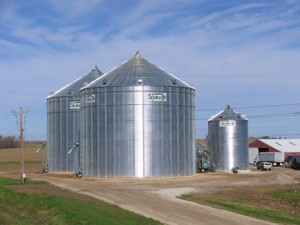According to Purdue University agricultural economist Chris Hurt, grain crops are being “gobbled up” faster than farmers can grow them. This could lead to trouble down the road if production doesn’t catch up. Hurt says there have been two major demands surges on commodities in the past five years. One is the rising use of corn for ethanol production being driven by biofuel mandates and high oil prices. The second is increased soybean purchases by China being driven by the country’s growing income and food demand.
 “These greater levels of usage have placed a strain on the agricultural production system, resulting in low inventories that leave little room for any production shortfalls,” Hurt said. “Producers certainly have responded to try to meet those demands, but what we’ve seen is that demand has really outpaced the ability of the world to supply.”
“These greater levels of usage have placed a strain on the agricultural production system, resulting in low inventories that leave little room for any production shortfalls,” Hurt said. “Producers certainly have responded to try to meet those demands, but what we’ve seen is that demand has really outpaced the ability of the world to supply.”
Hurt said wheat stocks are in better shape than corn and soybeans that are near “bare minimums” in the U.S. In the past, he said there was enough for 46-60 days or more but anticipates that this won’t be the case after this fall’s harvest.
“With corn, it looks like we could be down to about a 24-day supply at the end of this marketing year,” said Hurt. “That, of course, means any further threats to the 2011 crop yields would send markets into deeper shortages and higher prices.”
Historically, the majority of the corn becomes livestock feed, but in recent years, a larger amount as been going to ethanol production. Hurt said this has led to increased corn acreage and higher prices.
“Fifty-nine percent of all the growth in corn use in the entire world over the last five years has been in a category where ethanol would be placed: industrial use,” Hurt continued. “Here in the United States over the last five years 100 percent of the increase in corn usage is for ethanol, representing 2.5 billion bushels of corn.”
About 27 percent of the U.S. corn crop is used for ethanol, compared to 10 percent in 2005, Hurt estimated. This somewhat factors in the fact that much of the corn used in ethanol production goes back into the market as livestock feed in the form of dried distillers grains. All told, says Hurt, 16 million additional acres of corn from the 2010 crop was required to produce ethanol versus 2005.
A soybean short fall is also estimated. The USDA has estimated that the soybean supply may be only 22 days on August 31. The U.S. has experienced a 60 percent growth in soybean exports between 2005-2010 with China accounting for the largest growth estimated at 23 million acres.
Hurt says that American farmers have their work cut out for them since the world is relying on them, more than any other country, to provide food and fuel. He concluded, “Either of these demand surges would have had significant impacts on crop prices, farm incomes and land values, but because they were both big and came at the same time the impacts were even larger.”

